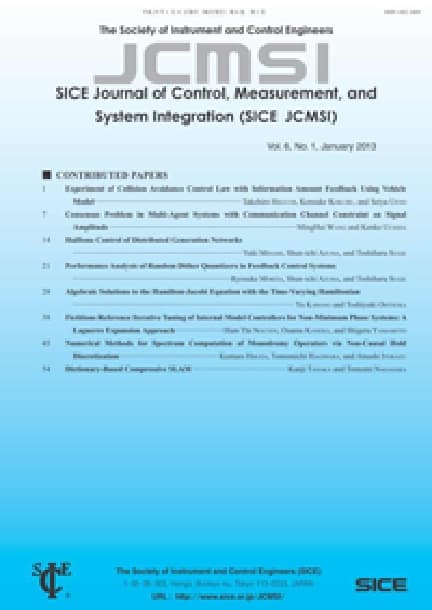Hierarchical Modeling and Local Stability Analysis for Repressilators Coupled by Quorum Sensing
Tomohiko NAKAMURA, Yutaka HORI, Shinji HARA
pp. 133-140
DOI:
10.9746/jcmsi.7.133Abstract
This paper proposes a hierarchical system representation of large-scale multi-cellular networks coupled by the quorum-sensing mechanism and present a control theoretic approach to systematically analyzing the local stability and instability of an equilibrium state. In particular, we are concerned with the dynamics of coupled Repressilators and analytically derive conditions for the local instability of a homogeneous equilibrium. It is first shown that the dynamics of the quorum-sensing network can be formulated as a dynamical multi-agent system with a hierarchical structure having low rank interconnections. This structural property then allows us to decompose the high-order dynamics of the coupled Repressilator network into two low-order systems. Thus, the proposed approach significantly reduces the complexity of the local stability analysis and leads to the analytic necessary and sufficient local stability conditions of a homogeneous equilibrium point. The analytic conditions reveal the reaction parameters that essentially affect the existence of oscillatory dynamics in the coupled Repressilator network.









